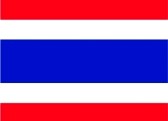All Categories
Mammoths and Mastodons: Titans of the Ice Age (Orbis Pictus Honor for Outstanding Nonfiction for Children (Awards))
Share Tweet
*Price and Stocks may change without prior notice
*Packaging of actual item may differ from photo shown
- Electrical items MAY be 110 volts.
- 7 Day Return Policy
- All products are genuine and original








About Mammoths And Mastodons: Titans Of The Ice Age
Product Description Mammoths and mastodons roamed the earth for more than a million years, and then suddenly went extinct. What was everyday life like for these colossal cousins of the modern elephant? What did they eat? How did they fit into their Ice Age landscape? Why did they disappear? These questions and more are answered in this fascinating book that presents the latest research, drawing on the recent discovery of a fully frozen baby mammoth—which has allowed scientists to learn more than they ever could have known just from studying bones and fossils. Profusely illustrated, Mammoths and Mastodons features photographs of archaeological digs, scientists at work in the field and in labs, and archival relics. Specially commissioned artwork also brings the story of mammoths and mastodons to life. The book includes a bibliography, a glossary, and an index. Exhibition schedulePublication will coincide with the Field Museum exhibit Mammoths and Mastodons, which runs from March 5 through September 6 in Chicago and is then projected to tour up to 10 venues through 2014. March 5–September 6, 2010: The Field Museum, ChicagoOctober 16, 2010–January 9, 2011: City TBANovember 25, 2011–April 15, 2012: City TBAMay 26–September 3, 2012: City TBAOctober 13, 2012–January 13, 2013: Museum of Science, Boston February 23–May 27, 2013: City TBAMay 10–September, 2014: City TBAF&P level: V F&P genre: I From School Library Journal Grade 5–7—Mammoths tend to get a lot of press, while their mastodon cousins accumulate footnotes, so it's nice to see mastodon getting second-banana billing in this attractive look at Ice Age favorites. Bardoe begins with the discovery of a marvelously preserved infant mammoth in Northern Siberia and goes on to discuss anatomy (comparing mastodon tusks and teeth, for example) and to postulate on probable Proboscidan behaviors based on fossil finds and extrapolation of modern elephant lifestyles. The readable text includes two fictional scenarios for fossils being found where they were (e.g., a young bull trapped in a steeper-than-expected water hole) and is nicely larded with interesting information boxes on such topics as "Treasures from the Permafrost." Excellent color photos and competent artwork lend visual interest, as does a Proboscidan "family tree" and a pair of maps (one of which, on Ice Age boundaries, may prove a tad confusing due to overlaps). Team this with Sandra Markle's dramatic Outside and Inside Woolly Mammoths (Walker, 2007) or Windsor Charlton's investigation of the Jarkov mammoth in Woolly Mammoth: Life, Death, and Rediscovery (Scholastic, 2001) for a grand view of an Ice Age icon. Eye-catching and informative.—Patricia Manning, formerly at Eastchester Public Library, NY (c) Copyright 2010. Library Journals LLC, a wholly owned subsidiary of Media Source, Inc. No redistribution permitted. From Booklist This well-designed book opens with two boys finding a strange animal dead on the arctic tundra. Their father hikes four days to a village where the news can be spread; then scientists take away the frozen baby mammoth, the first example found intact, and study it intensively. The book intersperses accounts of the scientists’ research and deductions with general information about mammoths and mastodons as well as imagined scenes taking place when they walked the earth. Bardoe draws connections between these Ice Age proboscideans and their modern cousin, the elephant. Back matter includes a glossary and a brief “Select References” section listing three scientists interviewed by the author and three books on mammoths, two of them for children. The book’s large format and heavy paper show off the color illustrations well. Besides maps and charts, there are many photos of scientists at work and artists’ depictions of mammoths, from today’s paintings to prehistoric cave drawings. A handsome introduction. Grades 4-7. --Carolyn Phelan About the Author Cheryl Bardoe is a fo




 (1)
(1)


















